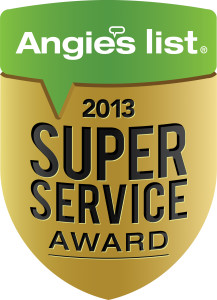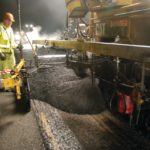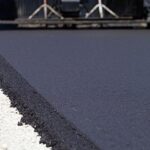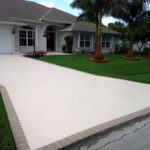What is used in seal coating?

Sealcoating is a crucial process in the maintenance of asphalt surfaces, such as driveways, parking lots, and roadways. This protective coating acts as a barrier against various environmental factors and wear and tear, extending the life of the asphalt and enhancing its appearance. The key ingredient in sealcoating is the sealant, which is typically a coal tar-based or asphalt-based product. However, sealcoating mixtures may also include various additives and aggregates to enhance performance and appearance. In this 1000-word essay, we will explore what is used in sealcoating, the types of sealants available, and the role of additives and aggregates in the process.
1. Sealants in Sealcoating
The primary component of sealcoating is the sealant itself. Sealants serve as the protective barrier that shields the asphalt from the elements, preventing damage from UV radiation, water penetration, oil and chemical spills, and physical wear. There are two main types of sealants used in sealcoating: coal tar-based and asphalt-based.
a. Coal Tar-Based Sealants:
Coal tar-based sealants have been widely used in sealcoating for many years due to their excellent protective properties. They are derived from the distillation of coal, resulting in a thick, dark black liquid. Key characteristics and benefits of coal tar-based sealants include:
Durability: Coal tar-based sealants are known for their superior resistance to UV radiation, chemicals, and water. They form a strong, impermeable barrier that can withstand harsh weather conditions and heavy traffic.
Appearance: These sealants typically produce a deep, dark black color, giving the asphalt a glossy and attractive finish. This aesthetic appeal is one reason why coal tar-based sealants have been popular for so long.
Protection: Coal tar sealants are effective at protecting the underlying asphalt from the harmful effects of oil and gasoline spills. They also resist oxidation and prevent the asphalt from becoming brittle and cracked.
Economical: While the initial cost of coal tar-based sealants may be slightly higher than asphalt-based sealants, their durability and protective properties make them a cost-effective choice in the long run.
b. Asphalt-Based Sealants:
Asphalt-based sealants, also known as asphalt emulsion sealants, have gained popularity as an alternative to coal tar-based sealants. These sealants are made from asphalt, which is a byproduct of petroleum refining. Key characteristics and benefits of asphalt-based sealants include:
Environmentally Friendly: Asphalt-based sealants are considered more environmentally friendly compared to coal tar-based sealants because they do not contain coal tar, a substance that is considered a potential environmental hazard.
Flexibility: Asphalt-based sealants are known for their flexibility and ability to expand and contract with temperature fluctuations. This flexibility helps them resist cracking and peeling.
Fast Drying: Asphalt-based sealants typically dry faster than coal tar-based sealants, which can be advantageous for projects that require a quick turnaround.
Adhesion: They have good adhesion properties, ensuring that the sealant adheres well to the asphalt surface and provides a tight seal.
Affordability: Asphalt-based sealants are often more budget-friendly, making them a suitable choice for those looking for an economical solution.
2. Additives in Sealcoating
To enhance the performance of sealcoating, various additives are often incorporated into the sealant mixture. These additives can improve the properties of the sealant, making it more effective in protecting and preserving the asphalt surface. Common additives used in sealcoating include:
a. Latex or Polymer Additives:
Latex or polymer additives are used to enhance the flexibility and adhesive properties of the sealant. They help the sealant withstand temperature fluctuations and adhere better to the asphalt surface. Polymer-modified sealants are known for their durability and resistance to cracking.
b. Sand or Silica Fillers:
The addition of fine sand or silica fillers to the sealant mixture can improve the skid resistance of the asphalt surface. This is particularly important for parking lots and roadways, where traction and safety are key concerns.
c. Rejuvenators:
Rejuvenators are designed to revitalize and restore the asphalt’s flexibility and resiliency. They are often used in sealant mixtures to extend the life of older asphalt surfaces that have become brittle and prone to cracking.
d. Fast-Drying Additives:
In situations where quick drying is necessary, fast-drying additives can be incorporated into the sealant mixture. These additives help accelerate the curing process, allowing for a faster return to service.
e. Fillers and Thickeners:
Fillers and thickeners are used to adjust the viscosity and texture of the sealant, making it easier to apply and spread evenly across the asphalt surface. These additives help ensure uniform coverage and a smooth finish.
f. Reflective Additives:
Reflective additives can be included to enhance the visibility of the sealcoated surface at night. They can improve the safety of roadways and parking lots by increasing visibility in low-light conditions.
3. Aggregates in Sealcoating
Aggregates, often referred to as “non-skid” or “traction” additives, are commonly mixed with sealants to provide a textured surface that improves slip resistance and safety. Aggregates come in various forms, including:
a. Sand: Sand is one of the most common aggregates used in sealcoating. It provides a gritty texture to the sealcoated surface, enhancing traction and preventing slips and falls, especially in wet or icy conditions.
b. Colored Aggregates: Colored aggregates can be used to create decorative and aesthetically pleasing surfaces. These aggregates come in a variety of colors and can be mixed with the sealant to achieve specific visual effects.
c. Synthetic Aggregates: Some synthetic aggregates are designed to provide improved skid resistance while being less abrasive to the skin and less likely to cause damage to vehicles.
d. Gravel or Chips: For heavy-duty applications, such as roadways or industrial areas, larger aggregates like gravel or chips can be mixed into the sealant to create a highly durable and skid-resistant surface.
e. Rubberized Aggregates: Rubberized aggregates, typically made from recycled rubber, can enhance skid resistance and reduce the impact of the sealcoated surface, making it more forgiving to pedestrians and vehicles.
f. Fibers: Some sealants contain synthetic or natural fibers to add texture and strength to the surface. These fibers can help reduce cracking and increase durability.
The choice of aggregates and their proportions in the sealant mixture depend on the specific requirements of the project and the desired outcome. Aggregates play a vital role in ensuring the safety and performance of the sealcoated surface, especially in areas with high foot traffic or vehicle use.
Conclusion
In summary, sealcoating is a vital maintenance process for protecting and preserving asphalt surfaces, such as driveways, parking lots, and roadways. The primary component of sealcoating is the sealant, which can be either coal tar-based or asphalt-based, each with its own characteristics and benefits. Additionally, sealcoating mixtures may include various additives to enhance performance and appearance, such as latex or polymer modifiers, sand or silica fillers, and rejuvenators. Aggregates, such as sand, colored aggregates, and rubberized materials, can be incorporated into the sealant to improve slip resistance and safety
Contact us
 Phone Call |
 Text Message |
 |







